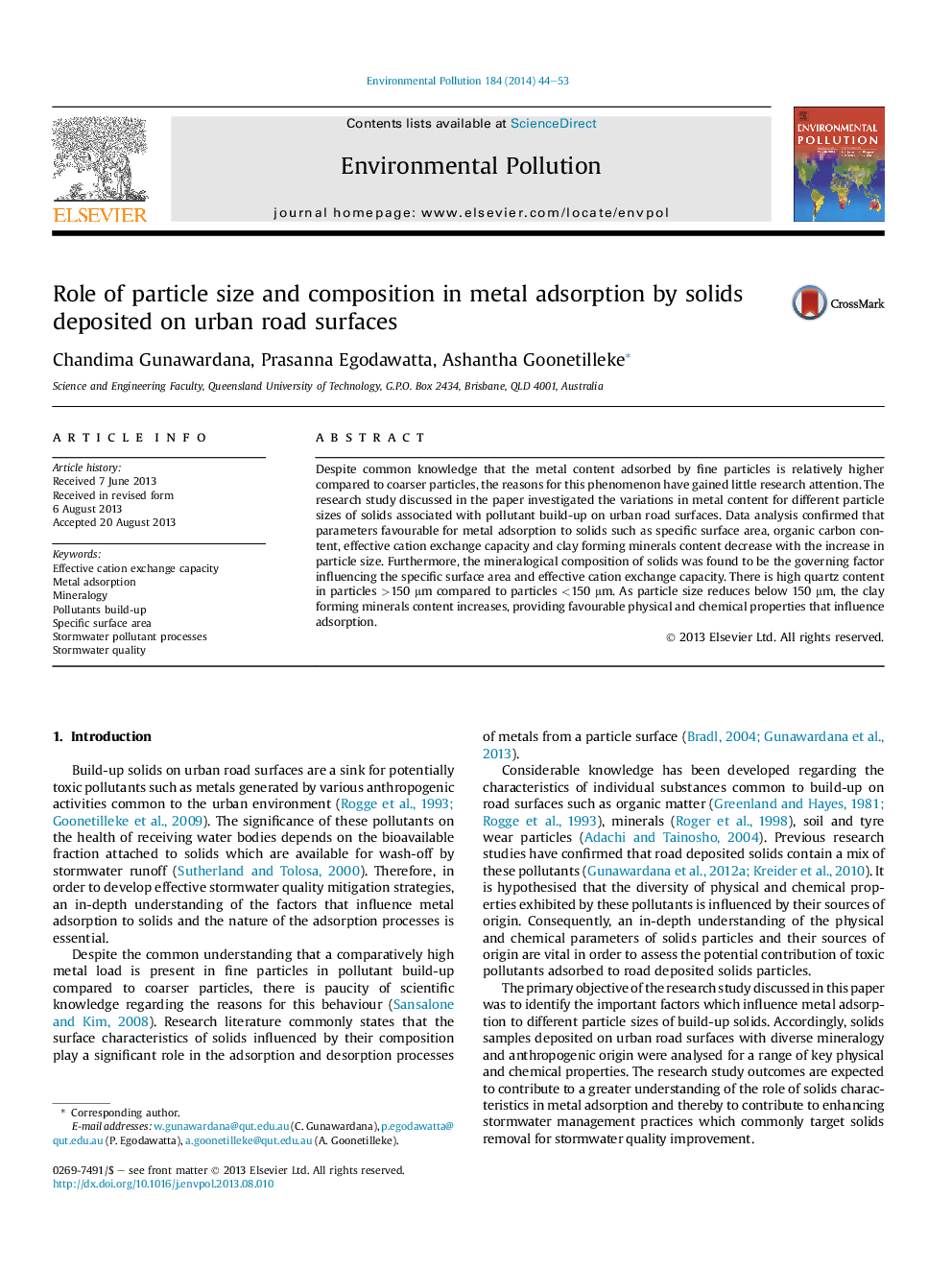| Article ID | Journal | Published Year | Pages | File Type |
|---|---|---|---|---|
| 6317381 | Environmental Pollution | 2014 | 10 Pages |
Abstract
Despite common knowledge that the metal content adsorbed by fine particles is relatively higher compared to coarser particles, the reasons for this phenomenon have gained little research attention. The research study discussed in the paper investigated the variations in metal content for different particle sizes of solids associated with pollutant build-up on urban road surfaces. Data analysis confirmed that parameters favourable for metal adsorption to solids such as specific surface area, organic carbon content, effective cation exchange capacity and clay forming minerals content decrease with the increase in particle size. Furthermore, the mineralogical composition of solids was found to be the governing factor influencing the specific surface area and effective cation exchange capacity. There is high quartz content in particles >150 μm compared to particles <150 μm. As particle size reduces below 150 μm, the clay forming minerals content increases, providing favourable physical and chemical properties that influence adsorption.
Keywords
Related Topics
Life Sciences
Environmental Science
Environmental Chemistry
Authors
Chandima Gunawardana, Prasanna Egodawatta, Ashantha Goonetilleke,
